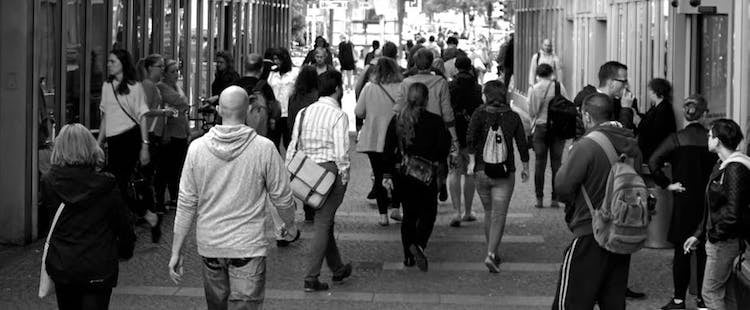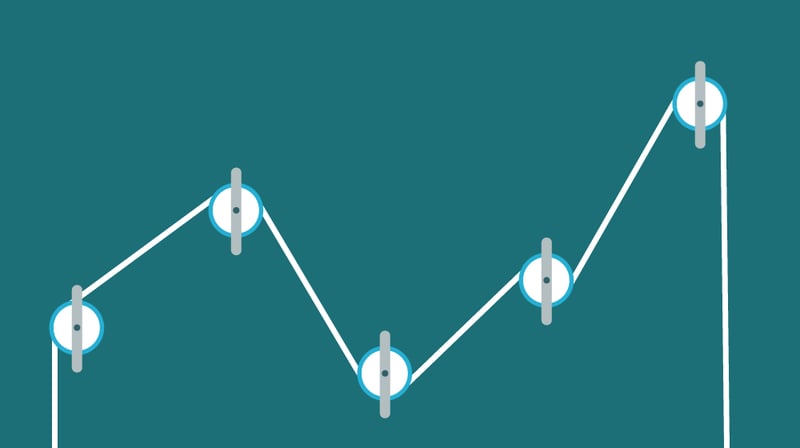Imagine answering all of your questions you have about a student’s involvement on campus.
It would feel great to know all of the best times to plan a program, schedule meetings, or simply to interact with students to maximize their engagement and further understand how we can build meaningful relationships with them.
As someone who is always thinking about the best way to engage students and has a diverse array of student life experiences, I’m always looking for top strategies to provide student affairs professionals about this topic. The higher education industry is always eager to dig up new information about timing of events, loyalty of students, and which students are the most involved (or not involved at all).
So how do we organize and make sense of all of the data we collect?
Real-time data analytics is a major focus at today’s colleges and universities to determine student success. Analytics provide student affairs professionals the power to analyze and change what they need to do to retain students and engage them better. If you use analytical tools, you will know where you are, what exactly you’re doing, whether or not what you’re doing is working, whether or not you need to being doing new things to customize content or events, and you’ll have infinitely more information to help students persist while in college.
Maximizing this data, is a topic where I’d love to dig deeper with you!
Here I share a few ways you can maximize your own involvement data with real-time analytics to understand which areas you can improve.
1. Finding the Best Time to Plan a Program or Event
Recognizing the need for consistent tracking of event metrics helps SA pro’s identify key trends, like finding the best time to plan a program or event.

Here are some key takeaways we’ve come up with in terms of maximizing event and program times.
Key learnings:
- A ‘peak hour’ for one office located across campus may be a ‘non-peak’ hour for another office in terms of student traffic for program engagement. Often, the students who have classes in a particular part of campus may be more involved in student groups due to their respective location.
- Strategize with other departments or offices when planning events: don’t compete. Maybe there is an institutional hour where students take time to focus purely on co-curricular involvement. When planning events, utilize an electronic campus calendar integrated with student organizations to optimize scheduling.
- Don’t necessarily look at the average of all of the data from campus events. This can become problematic for students who already feel like outliers on-campus. We must consider the peaks and valleys of event timing from real-time data analytics, and find new ways of how we can be inclusive to student’s schedules.
- Optimize your staff’s schedules and allow for flexible scheduling to provide the best support and look to create more opportunities to engage students.
- Remember to include off-campus student schedules. At what time is it best to hold, for example, a career Twitter chat online? Can we provide resources online or off-campus at varied times to provide the best support? These are all key questions to consider when looking to engage a diverse off-campus population.
What to do with program and event timing data
Once you collect and compile all of this rich data about students, take time to reflect on how you can start to make changes. The purpose of collecting data is to make sure you’re making data-informed decisions around student engagement. First, think about how your campus defines engagement and discuss with your student affairs team how timing ultimately impacts engagement.
Second, share the data across campus! Asking various professionals for their lens on the data can help your team discover gaps you may not have seen otherwise.
Third, pull up real-time data in meetings on a tablet or laptop to show off the latest campus engagement trends to your fellow student affairs colleagues. Making the data public can help your team hold real conversations about the state of student engagement: this can help you further synthesize data and give you a specific direction to go. (Also, you don’t have to hold a follow up meeting to wait to share or receive the data – WIN)!
2. Optimizing Event Offerings & Content
What worked five years or even one year ago may not be effective with today’s college student. It’s fun to stay up-to-date on the latest engagement trends, and what’s more fun is experimenting with them on your campus to see what really sticks.

Here are some takeaways on how to diversify your content and get it right every time.
Key learnings:
- Passive events, large scale events, service-learning events and popup events. The style of event is equally as important as the type of content you choose to offer.
- Different events attract different personalities. You may not get the introvert to come out to a concert, however, they may be more inclined to come out to a panel or TED Talk. Think about the way students process information and diversify events around student personalities and accessibility.
- Students are looking for meaningful events. They want to create memories and not necessarily collect things (like swag). When thinking about creating new experiences for students, reflect on the five senses: What are they seeing? What do they smell? How are they feeling overall?
- Use organizational tags to understand what type of event was offered. Maybe the event was centered around #food or was part of a #multicultural event week. Tags easily categorize events and make it easier for you to reference back to.
- Partner with departments to manage your budget effectively, co-sponsor, and offer the best events. When campuses bring diverse minds to the table, they pump out better events that are more inclusive to students.
- Post-event engagement is just as important as pre-event engagement! Make sure to create strategies for both to measure event content effectiveness and make changes for next time. Consider swiping student ID’s at each event to easily generate an e-mail list to reach students, zip out pre- and post-surveys, and organize your assessment data.
What to do with event content and student involvement data
Data visualization is a powerful way to gain credibility and further highlight all the great work you do! Use involvement data to explain to parents and potential students what student involvement really looks like on campus and how students can get involved.
Analyzing event content data helps you predict where time can be best spent in the future. In what ways do you obtain diversified student feedback on event type or content type, if any? Have you typically collected the same feedback from the same students attending similar events? Look at the data holistically, from multiple perspectives, and use your team to give feedback on the overall feeling or ‘pulse’ on the event while comparing it to hard numbers. Compile your own study on event offerings and draw comparisons from month-to-month or semester-to-semester based on feedback.
3. Developing An Amazing Marketing Strategy
The way an event or program is marketed can determine the success of the event itself. That’s why it’s so important to take some time to really get your marketing strategy off-the-ground and iterate to find out what works best!

Here are some takeaways when planning the best marketing strategy.
Key learnings:
- Find the best time to utilize social media on your campus. There are tons of reports and advice out there about the best time to distribution content or information. Sometimes the best way to get the numbers right is to figure it out on your own and experiment. To start out, try posting 4 different times throughout the day, every day and review your findings at the end of the week.
- Give students more responsibility. Hire social media managers, marketing managers, and parallel what a real-time job in their field may look like on-campus. Ask students to think of new street-team marketing ideas to further engage students on-the-spot.
- Plan out Big Hairy Audacious Goals (B.H.A.G. for short). Encourage students to go above and beyond to understand how other students want to be connected and engaged with. Post marketing metrics in a common area for your team to see and help your team understand where you need to put in some extra elbow grease.
What to do with marketing data
Marketing data helps us translate online relationships to in-person engagement and learning!
Analyze what is the best time to Tweet on Twitter, best time to post on Facebook, and the best time to snap a photo to harness the most Instagram engagement. Engagement can take all sorts of shapes and sizes. After experimenting with social media platforms, create a consistent strategy with students to maintain engagement online. You may find that Snapchat is a great way to reach the entire campus population, including off and off-campus students. Instagram and Facebook may be a great way to build more alumni and prospective student engagement.
Let’s be clear: marketing is not only social media. We consider it only a piece of the pie. Did you utilize a student engagement platform (the first step of marketing)? Did your team create a checklist or brainstorming sheet to help get the word out?
There is a specific recipe you need to follow to get your marketing strategy right: experiment, iterate, and experiment more!
Fostering Inspiration, Not Prescriptions
The future of student involvement includes utilizing a student engagement software platform to retrieve specific real-time analytics about student events and programming.
Too often we hear, “What software works best?” when looking for a software grounded in assessment. In order to understand what types of results a software delivers and how it impacts student learning outcomes, student affairs professionals must ask “In what context?” to find what works best for them.
It’s great to hear about all the great things that you can do, and at the end of the day it’s about getting your hands dirty and taking a data-driven approach to it all.
Tweet us to continue the conversation @HelloPresence! Thanks for reading.





